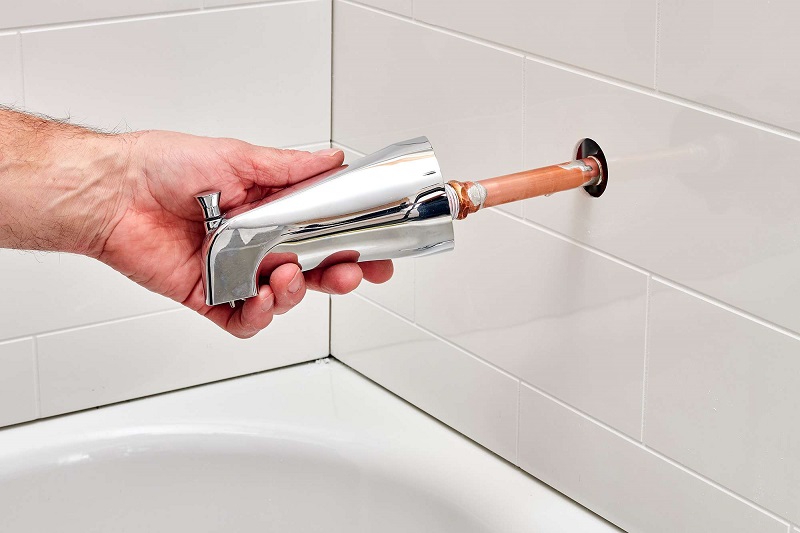Are you tired of that leaky tub faucet that just won’t quit? Replacing your tub faucet may seem daunting, but with the right tools and a bit of guidance, it can become a straightforward DIY task. Not only will you save money by avoiding hiring a plumber, but you’ll also gain a sense of accomplishment once the job is done. In this guide, we will walk you through the steps of how to replace tub faucet, ensuring that your bathroom looks and functions as good as new.
When it comes to home improvement projects, replacing a tub faucet is one of the most rewarding. A new faucet can enhance the aesthetic appeal of your bathroom and improve the overall functionality of your tub. Before diving into the process, it’s essential to gather the necessary tools and materials, which will make your replacement experience smoother and more efficient.
Throughout this article, we will cover everything from understanding the different types of tub faucets to the actual replacement steps, along with some tips to avoid common mistakes. So, if you're ready to tackle this project, let’s get started with how to replace tub faucet!
What Types of Tub Faucets Are There?
Before you can replace your faucet, it's crucial to understand the types available. Here are the most common types:
- Compression Faucets: These have separate hot and cold knobs and use rubber washers to prevent leaks.
- Ball Faucets: Featuring a single handle that controls both temperature and flow, ball faucets are popular for their modern look.
- Cartridge Faucets: These faucets are easy to operate and maintain. They can be single or double handled.
- Disk Faucets: Using a ceramic disk, these are known for their durability and are found in higher-end models.
What Tools Do I Need to Replace a Tub Faucet?
Having the right tools on hand can make the replacement process much smoother. Here’s a list of essentials:
- Adjustable wrench
- Screwdriver (flathead and Phillips)
- Pliers
- Plumber’s tape
- Bucket (to catch any water)
- Rag or towel (for cleanup)
How Do I Prepare for the Replacement?
Preparation is key to a successful faucet replacement. Here are the steps you should follow:
- Turn off the Water Supply: Locate the shut-off valves under the sink or tub and turn them off.
- Drain the Tub: Open the faucet to let any remaining water drain out.
- Gather Your Tools: Make sure you have everything listed in the previous section.
How to Remove the Old Tub Faucet?
Now that you’re prepared, it’s time to remove the old faucet. Follow these steps:
- Remove the Handle: Look for a screw on the handle, often hidden under a decorative cap. Unscrew it and pull the handle off.
- Take Off the Trim: If your faucet has a trim piece, remove it using a screwdriver.
- Unscrew the Faucet Body: Use an adjustable wrench to loosen and remove the faucet body from the plumbing.
How to Install the New Tub Faucet?
With the old faucet removed, you can now install the new one. Here’s how:
- Prepare the Area: Clean the surfaces where the new faucet will be installed.
- Attach the New Faucet: Position the new faucet over the holes and secure it with screws.
- Connect the Plumbing: Use plumber’s tape on the threads and tighten the connections with an adjustable wrench.
How Do I Test the New Faucet?
Once the new tub faucet is installed, it's essential to test it to ensure everything works correctly:
- Turn the Water Supply Back On: Slowly open the shut-off valves.
- Check for Leaks: Turn the faucet on and observe for any leaks around the connections.
- Test the Water Flow and Temperature: Ensure that both hot and cold water are functioning as expected.
What Are Some Common Mistakes to Avoid?
To ensure a smooth replacement process, be aware of these common pitfalls:
- Not turning off the water supply, leading to a messy situation.
- Forgetting to use plumber’s tape, which may cause leaks.
- Over-tightening connections, which can damage the faucet or plumbing.
How to Maintain Your New Tub Faucet?
Once you've successfully replaced your tub faucet, proper maintenance will help it last longer:
- Regularly check for leaks and tighten connections as needed.
- Clean the faucet with a mild detergent to prevent mineral buildup.
- Replace washers and seals at the first sign of wear.
Replacing your tub faucet doesn’t have to be a daunting task. By following this guide on how to replace tub faucet, you can enjoy a new fixture in your bathroom that not only looks great but also functions well. With the right tools and a little preparation, you’ll have your new faucet installed and ready to use in no time!
You Might Also Like
Unveiling The Extraordinary: The Powers Of Soldier BoyUnveiling The Enchanting World Of The Voice Of Sandy
Exploring The Timeless Charm Of "My Girl" Lyrics
Unraveling The Mystery: The Best Thriller Books Of All Time
Discovering Knuckle Bump Farms: A Unique Journey Into Sustainable Agriculture
Article Recommendations
- Frances Beatrix Spade
- Michael Dorman Children
- Marisa Verrochi Walsh
- Yumi Eto Onlyfans Porn
- Jung Ryeo Won Husband
- Who Is Ryan Reynolds Voting For
- James Garner
- All Pokemon Go Free Item Promo Codes
- Dbushnews5_0.xml<
- Gypsy Rose Crime Scene


